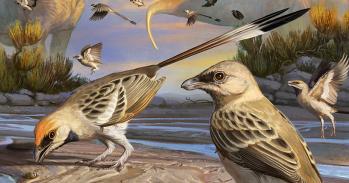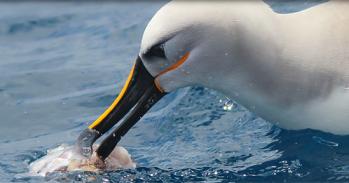
Evolutionary trick allows cuckoos to mimic the plumage of birds of prey, and may be used to scare mothers from their nests so that cuckoos can lay their eggs. Mimicry in cuckoos may be more much more widespread than previously thought.
Evolutionary trick allows cuckoos to mimic the plumage of birds of prey, and may be used to scare mothers from their nests so that cuckoos can lay their eggs. Mimicry in cuckoos may be more much more widespread than previously thought.
There is no benefit in looking like a dangerous species your target is not familiar with
Thanh-Lan Gluckman
New research shows that cuckoos have striped or “barred” feathers that resemble local birds of prey, such as sparrowhawks, that may be used to frighten birds into briefly fleeing their nest in order to lay their parasitic eggs.
By using the latest digital image analysis techniques, and accounting for “bird vision” - by converting images to the spectral sensitivity of birds - researchers have been able to show for the first time that the barred patterns on a cuckoo’s breast may allow it to impersonate dangerous birds of prey. This might enable cuckoos to frighten other avian hosts into leaving their nests exposed.
The latest findings, published today in the journal Animal Behaviour, expand the cuckoo’s arsenal of evolutionary deceptions, which include egg mimicry and chick mimicry that allow it to trick other birds into incubating its eggs.
Importantly, the study shows that a wide variety of cuckoos have adapted different plumage patterns depending on the area they inhabit so that they match a local bird of prey species.
While scientists have previously looked at links in plumage patterns between the common cuckoo and Eurasian sparrowhawk, the new research shows that this type of impersonation of a more dangerous animal – called ‘Batesian mimicry’ – may be far more widespread in cuckoos. In addition, the dangerous bird of prey that cuckoos resemble goes beyond sparrowhawks to include such raptors as bazas and harrier-hawks - depending on the species prevalent in the cuckoo’s neighbourhood.
“There is no benefit in looking like a dangerous species your target is not familiar with,” said lead researcher Thanh-Lan Gluckman from Cambridge’s Department of Zoology.
“We first established similarity in plumage pattern attributes between cuckoos and raptor species, and then showed that cuckoos look nothing like species from a different geographical area.”
The cuckoos also use their crafty ‘hawk impression’ to allow them to fly ‘under the radar’, undetected as they scope out potential nests in which to deposit their parasitic eggs.
“The barring on their plumage helps cuckoos conceal themselves while searching for potential nests, then when they approach, the host of the nest may mistake a cuckoo for a raptor coming to get them – giving them unfettered access to lay eggs,” Gluckman said.
While previous studies have focused on Batesian mimicry in the common cuckoo and Eurasian sparrowhawk, this is the first time that the plumage patterns of cuckoos have been analysed using digital image analysis techniques. The study suggests that this form of mimicry may be widespread among many cuckoo species, and that they may be mimicking a variety of different types of birds of prey.
The researchers were surprised to find no pattern matching between cuckoos and raptors that live in different geographical areas, showing that the visual similarity is highly localised to species in the immediate vicinity.
“These findings underscore the importance of using digital image analysis to objectively quantify plumage patterning in mimicry – it is important not to make assumptions about even simple patterns such as these,” added Gluckman.
“We hope this encourages other researchers to examine the function of barred plumage in parasitic cuckoos and raptors the world over.”
Another interesting finding is that of the African cuckoo-hawk, a raptor so named because of its visual resemblance to cuckoos. This study objectively shows that the naming was an apt one, given that a local cuckoo matched the African cuckoo-hawk in all of the pattern attributes measured.
One of the earliest observers of the cuckoos’ invasive guile was Ancient Greek philosopher Aristotle, who noted some 2,300 years ago that it “lays its eggs in the nest of smaller birds”.
This work is licensed under a Creative Commons Licence. If you use this content on your site please link back to this page.





